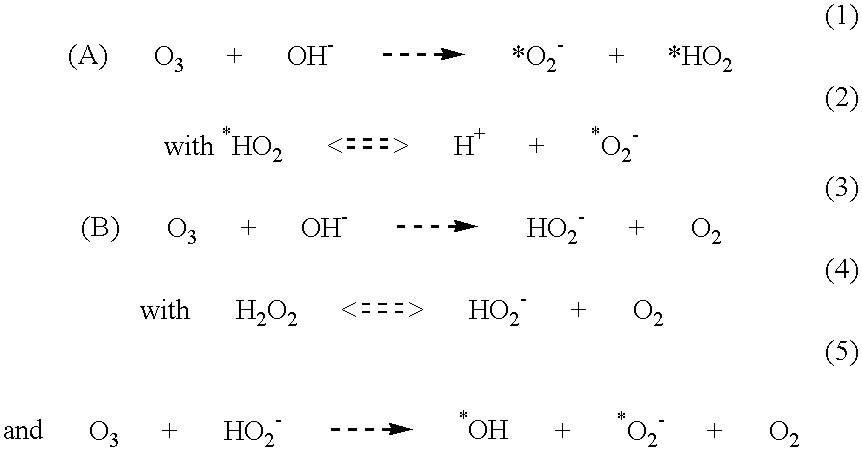Method for removing organic contaminants from a semiconductor surface
a technology for organic contaminants and semiconductors, applied in the direction of photomechanical equipment, cleaning using liquids, instruments, etc., can solve the problems of non-uniform etching and cleaning on the wafer surface, high processing temperature, and high cost of chemicals
- Summary
- Abstract
- Description
- Claims
- Application Information
AI Technical Summary
Problems solved by technology
Method used
Image
Examples
Embodiment Construction
[0057] The purpose of the present invention is related to a method for removing organic contamination from a substrate and / or to a method for oxidizing a silicon wafer. Said substrate can be a semiconductor surface. Said method can be applied for the removal of photoresist and organic post-etch residues from silicon surfaces. Said organic contamination can be a confined layer covering at least part of said substrate. Said confined layer can have a thickness in a range of submonolayer coverage to 1 .mu.m. Said method is applicable for either gasphase or liquid processes.
[0058] In the following specification, a first preferred embodiment of the invention for gas phase processing and a second preferred embodiment for liquid phase processing are described.
[0059] Description of a First Preferred Embodiment for Gasphase Processing
[0060] In said gasphase process, said substrates are placed in a tank such that said substrates are in contact with a gas mixture containing water vapor, ozone a...
PUM
| Property | Measurement | Unit |
|---|---|---|
| thickness | aaaaa | aaaaa |
| temperature | aaaaa | aaaaa |
| temperature | aaaaa | aaaaa |
Abstract
Description
Claims
Application Information
 Login to View More
Login to View More - R&D
- Intellectual Property
- Life Sciences
- Materials
- Tech Scout
- Unparalleled Data Quality
- Higher Quality Content
- 60% Fewer Hallucinations
Browse by: Latest US Patents, China's latest patents, Technical Efficacy Thesaurus, Application Domain, Technology Topic, Popular Technical Reports.
© 2025 PatSnap. All rights reserved.Legal|Privacy policy|Modern Slavery Act Transparency Statement|Sitemap|About US| Contact US: help@patsnap.com



